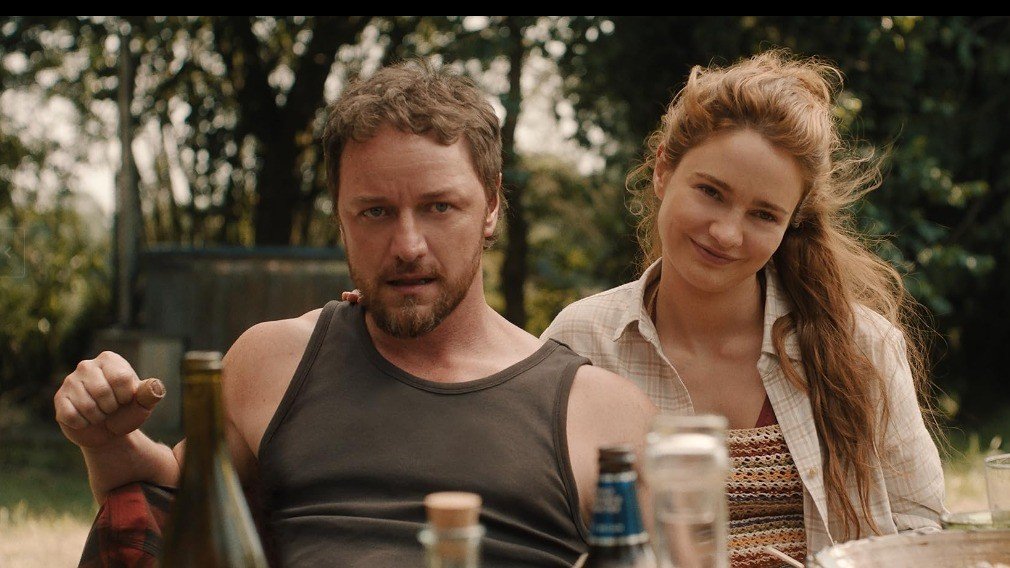Title: Speak No Evil
Director: James Watkins
Cast: James McAvoy, Mackenzie Davis, Aisling Franciosi, Scoot McNairy, Alix West Lefler, Dan Hough
Where: In theatres near you
Rating: 3 Stars
James Watkins’ Speak No Evil, a remake of the 2022 Danish psychological thriller Gaesterne, falls into the classic trap of over-explaining a story that originally thrived on restraint. Where the Danish film’s brilliance lay in its chilling ambiguity, Watkins opts for a more conventional approach, packing in backstories and motivations that drag down the taut, creeping horror of the original. The result is a competently made but ultimately defanged film that sacrifices subtlety for Hollywood gloss.
The setup remains largely the same: a well-to-do couple, Ben (Scoot McNairy) and Louise (Mackenzie Davis), are invited by their charismatic new friends Paddy (James McAvoy) and Ciara (Aisling Franciosi) to spend a weekend at their remote country house. What starts as an idyllic getaway soon spirals into a disturbing psychological game as their hosts’ sinister intentions become clear. In the original, much of the horror derived from the unspoken tensions and the dread of not knowing how far things could go. However, Watkins’ version feels the need to spell everything out, giving each character a detailed backstory—Ben and Louise’s marital troubles, Paddy and Ciara’s tragic pasts—that distracts from the film’s eerie momentum.
McAvoy, typically excellent in these roles, delivers an unsettling performance as the seemingly charming but dangerous Paddy, though his portrayal lacks the deceptive subtlety that made the original antagonist so terrifying. His intensity leaves little room for ambiguity, telegraphing the dark turn far too early. Similarly, Davis and McNairy are convincing as the hapless couple, but their characters are burdened with unnecessary exposition, making them feel more like archetypes of American guilt and naïveté than real people trapped in a terrifying situation.
One of the film’s greatest missteps is its shift in tone. Where the Danish version thrived on psychological horror, Watkins leans into a slasher aesthetic by the final act, discarding the slow-burn tension that made the original so powerful. The decision to amp up the violence and action dilutes the sense of helplessness that permeated the original climax, trading the chilling inevitability of horror for a more formulaic, action-driven conclusion that panders to American genre conventions. The result feels predictable and, ultimately, unsatisfying.
Despite its flaws, the film is not without its strengths. Watkins has a good eye for framing tension, and the film’s first two-thirds effectively build a sense of unease. The performances are solid across the board, and the rural setting is suitably atmospheric. Yet these qualities can’t overcome the feeling that this remake is merely a watered-down version of something far more unsettling. For viewers unfamiliar with the original, it may offer some well-crafted thrills, but for those who have seen the Danish version, this remake will likely feel like a hollow echo of a much more profound horror.
Overall, the film is more conventional and far less memorable.




